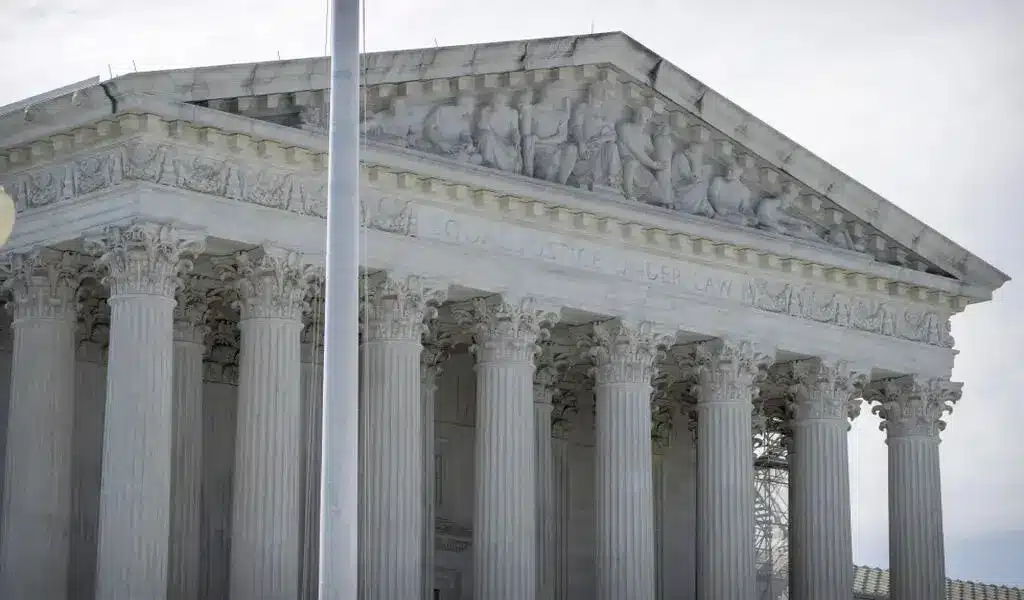News
China’s Mekong Plans Threaten Disaster for Countries Downstream

Chinese cargo ships sail on the Mekong river near the Golden Triangle at the border between Laos, Myanmar and Thailand – Photo Reuters
–
CHIANG RAI – Thirty million people depend for a living on the Mekong, the great Asian river that runs through Southeast Asia from its origins in the snowfields of Tibet to its end in the delta region of Vietnam, where it fertilizes one of the world’s richest agricultural areas.
It’s the greatest freshwater fishery on the planet, second only to the Amazon in its riparian biodiversity. If you control its waters, then you control much of the economy of Southeast Asia.
In meetings with the other lower Mekong states — Myanmar, Thailand, Laos, Cambodia, and Vietnam — China talks about a “community of shared future.” But as China’s economy and its ambitions have both expanded, so have its goals for the Mekong.
Beijing has expanded its control of the waters by building new hydroelectric dams and by what some experts call hydrodiplomacy, creating and financing a new governing body on the river that rivals a former Western-supported group. For critics, control of the waterway is a key move in China’s attempt to establish itself as a regional hegemon; for locals by the river, it’s also a potential environmental and economic disaster.

An aerial view of the dam at the Jinghong Hydropower Station on the Lancang River, the Chinese part of the Mekong River, in Jinghong city, Xishuangbanna Dai Autonomous Prefecture, southwest China’s Yunnan province.
–
China’s latest move has been to press downstream countries for what’s euphemistically called “navigation channel improvement,” which means allowing its engineers to dynamite rocks and small islands in the Mekong so that bigger ships can make the journey all the way from Yunnan to Luang Prabang and, eventually, to the South China Sea.
This has not gone unnoticed, especially in Thailand, where grassroots organizations have joined with environmentalists to protest Chinese activities on the river. But Chinese plans and projects are not the only issue. Environmental protests have widened their scope as some of the downriver countries, including Laos, Cambodia, and Thailand itself, are building their own gigantic hydroelectric dams, financed by consortiums of Southeast Asian banks.
The Chinese dams alone, taken together, produce some 15,000 MW of electrical power, enough to power a city of between 1 million and 2 million people.
But according to numerous studies, these projects — added to the dams already built and planned for downstream — will complete the transformation of the river, turning it essentially into a series of canals and lakes good for electrical generation and shipping but, critics say, ruinous for fish, fishermen, and farmers along its banks.
“It is the people upstream that get the benefits of controlling the water,” Apisom Intralawan, a scholar at the Institute for the Study of Natural Resources and Environmental Management in the northern Thai city of Chiang Rai, said. “The downstream people are losers.… We get electricity, but we lose fisheries, and if you examine the consequences, the fishery loss is greater than the electricity gain.”

The Save the Mekong Coalition has addressed concerns to the Mekong River Commission, Mekong governments and international donors regarding the rush to build more dams on the Mekong River
–
In July, I went to the Thai port town of Chiang Khong on the south bank of the Mekong, a few hundred yards from Laos, whose green hills, dotted with sheds and houses, are visible on the other side. The summer river flows in yellow-tinted brown, branches, leaves, and plastic bottles moving downstream with the swift current, the banks thick with wild banana trees and river palms. Narrow wooden boats drift languidly, dragging fishing nets. There are small ports, concrete ramps leading into the water, where fruit and vegetables are offloaded by hand from pickup trucks and vans and put onto small freight boats that cross the river to Laos.

The Mekong River faces increased vulnerability from the construction of dams, rapids blasting, water diversions and climate change
–
Below the town, right on the river, are some wood huts with thatched roofs and a sign in English that reads, “Justice for the Mekong River and Its People.” This is part of the Chiang Khong Conservation Group, led by a former local schoolteacher named Niwat Roykaew. Twenty years ago, he told me, local people began noticing changes in the river, especially in the usual water levels, though it took some time for him and his colleagues in the nascent organization to understand the cause — dams being built by China in southwestern Yunnan province. “Where the water should have been high, it was low,” he said, “And where it should have been low, it was high.”

–
To date, six big dams have been completed on the Chinese portion of the Mekong, known there as the Lancang Jiang, and the downriver complaints are many — destruction of a freshwater seaweed called gai that is harvested by local people and sold in the market, damage to breeding grounds, and water levels that swing from sudden floods to trickles that leave local boats scraping the bottom.
But there isn’t much that environmentalists can do about the upriver dams, constructed unilaterally and without consultations or negotiations with the downriver countries.
That’s why local attention has focused on a different issue: the Chinese request, repeatedly made over the years, to dynamite some 15 rock formations and tiny islets in order to clear the waters for boats weighing up to 500 tons, which is a ship about 100 meters in length, nearly twice the size of any vessel that can navigate the Mekong now.
This May, three Chinese survey boats appeared on the river at Khon Phi Luong, a stretch of the Mekong upriver from Chiang Khong. China has already carried out an initial phase of its navigation improvement scheme, clearing obstacles in Myanmar, so Khon Phi Luong, a mile-long stretch of rapids between the verdant hills of Thailand and Laos, is the only remaining obstacle to ships of 500 tons between Yunnan and Luang Prabang.

A Chinese boat with a team of geologists surveys the Mekong River, at the border between Laos and Thailand April 23, 2017
–
The Chinese boats, which carried engineers and survey equipment, were met with a small flotilla of Thai fishing boats, with protesters holding up signs reading “Save the Mekong” and “Stop Rock Blasting.” Mindful of this opposition, the Thai government, while it allowed the Chinese engineers to survey the river, has not given the go-ahead for the actual blasting.
“China asks again and again,” a Chiang Khong storekeeper who was on the protest flotilla told me. “But we’ll resist every time.” The protests may play a role, but the Thai military is also said to be concerned about clearing the channel at Khon Phi Luong, because doing so would change the official border line between Laos and Thailand to the latter’s disadvantage.
Meanwhile, the six dams that China has already built on what it calls the Lancang Jiang are only the beginning. According to International Rivers, an NGO with offices in Thailand, China plans a total of 28 dams in Yunnan province. In addition, there are 11 large dams already under construction or in planning stages on the lower Mekong, plus 30 on its tributaries.
In most cases, required environmental impact studies have been done on these dams, but many of them, paid for by the governments involved, are faulted by scholars and environmentalist groups for various reasons — from underestimating the value of the fish catch that will be lost to overestimating the usefulness of ladders that the migrating fish will need to get past the dams. Sediment will be trapped in the upriver dams, depriving the downriver areas of essential nutrients for fish and plants.

Pianporn Deetes Thailand and Burma Campaigns Director, International Rivers
–
“Chinese experts have told me, ‘We will give you more clear water in the dry season,’ but actually we don’t need it,” Pienporn Deetes, the Thailand director of International Rivers, told me. “The sediment is captured by the dams upstream. The entire cycle has already collapsed.”
Thailand’s environmental movement appears to have some public support, but in a country that has been under the thumb of a military junta for the past three years, and where political gatherings of more than five people are banned, it has little political power. The junta, eager to promote economic development, has welcomed close relations with China as it has distanced itself from Washington, Thailand’s closest ally since the end of World War II. And while some Thais are alarmed at the expansion of China’s presence in the country, the junta clearly appreciates that, unlike the United States, Beijing has no issues with the military’s 2014 coup against a democratic government or its suspension of civil liberties.
“We are not your colony,” Panitan Wattanayagorn, an American-educated advisor to Thailand’s deputy prime minister of security, told me in an interview in Bangkok. He was expressing the resentment he said Thais feel about American and European criticisms and of a scaling down of U.S. military aid to Thailand, which contrasts with China’s policy of noninterference. Closer ties have involved the first-ever Thai purchase of arms from China — a submarine costing more than $390 million (with an option to buy two more at what Thai officials describe as a favorable price) — and $59 million worth of armored personnel carriers.
Chinese investment in Thailand, as well as in neighboring Myanmar, Laos, and Cambodia, has rapidly increased. There are ongoing talks with China about its Belt and Road Initiative, an increasingly nebulous and all-encompassing plan that started as a mass expansion of Eurasian ties. New roads are being built from Kunming, the capital of Yunnan, to Thailand via Laos and over the Thai-Lao Friendship Bridge, just a few miles downriver from Chiang Khong. Ground has been broken for a high-speed rail link connecting Kunming with Bangkok, then heading farther south all the way to Singapore.

Chinese President Xi Jinping (R) meets with Thai Prime Minister Prayuth Chan-ocha.
–
China’s growing presence is natural and normal in many ways, given the country’s proximity and its wealth, but Beijing’s opaque politics and its naked ambition to become the dominant power in Asia also generate nervousness and suspicion.
“We are concerned about China’s activities in the South China Sea and on the Mekong,” Panitan said. The Thai government has not signed on to the very expensive high-speed train — except for one small stretch — and some Thai economists question whether these grand projects will bring gains to the country.
“China will get the benefit,” Saowaruj Rattanakhamfu, a senior economist at the Thailand Development Research Institute in Bangkok, told me. “Its exports will help the development of southern China,” she said, “but I study cross-border trade, and from that point of view, I don’t think Thailand will get much benefit.”
Thailand has few options when it comes to dealing with China’s plans for the Mekong, mainly because it has no power to prevent China from doing what it wants where the river runs through its territory. But China has also been carrying out what Carl Middleton, the former Mekong program director at International Rivers, calls “hydrodiplomacy,” creating a new multinational organization of the Mekong countries.
Since the 1950s, the main such group has been the Mekong River Commission (MRC), which, encouraged by organizations like the World Bank and largely supported by the United States and Japan, urged its members to explore hydropower as a key ingredient in their economic development.

The Mekong River Commission (MRC), which includes Cambodia, Laos, Thailand and Vietnam
–
China was never a member of the MRC, which makes the new group it has formed, known as the Lancang-Mekong Cooperation, the first organization to include all six Mekong countries. Its first meeting, held in China in March last year, was hailed by China’s press as a major new step in regional cooperation.
It is not clear exactly what the new mechanism will do, but it seems similar to other multilateral bodies created by China — like the Asian Infrastructure Investment Bank — which allow Beijing far greater power to take initiatives and to set rules than it does in older, Western-dominated institutions and through which it can work to blunt the grassroots and environmental opposition that its ambitions often generate.
China, as Middleton puts it, considers Southeast Asia to be its backyard, a place where it should have paramount influence, and one way it uses that influence is to incorporate the Mekong into its larger development plan. This involves using hydroelectricity to feed the industries of its southeastern coast and to use the revenues to reduce poverty in Yunnan. Its neighbors’ concerns barely infringe on these plans — this is a country, after all, that was happy to displace millions of its own people to build the Three Gorges Dam.
Given China’s ambitions, organizations like the Chiang Khong Conservation Group and others like it clearly face an uphill struggle. China and the downriver governments both envision a future for the Mekong in which it will be primarily a source of energy, thus stripped of its other uses and possibilities.
“If the trend continues,” Deetes told me, showing me brochures and studies on the transformation of the Mekong that has taken place already, “I don’t think we can stop anything.”
By Richard Bernstein
Foreignpolicy.com
—
Richard Bernstein, a former foreign correspondent in Asia and Europe for Time and The New York Times, is the author of China 1945: Mao’s Revolution and America’s Fateful Choice.

News
Google’s Search Dominance Is Unwinding, But Still Accounting 48% Search Revenue

Google is so closely associated with its key product that its name is a verb that signifies “search.” However, Google’s dominance in that sector is dwindling.
According to eMarketer, Google will lose control of the US search industry for the first time in decades next year.
Google will remain the dominant search player, accounting for 48% of American search advertising revenue. And, remarkably, Google is still increasing its sales in the field, despite being the dominating player in search since the early days of the George W. Bush administration. However, Amazon is growing at a quicker rate.
Google’s Search Dominance Is Unwinding
Amazon will hold over a quarter of US search ad dollars next year, rising to 27% by 2026, while Google will fall even more, according to eMarketer.
The Wall Street Journal was first to report on the forecast.
Lest you think you’ll have to switch to Bing or Yahoo, this isn’t the end of Google or anything really near.
Google is the fourth-most valued public firm in the world. Its market worth is $2.1 trillion, trailing just Apple, Microsoft, and the AI chip darling Nvidia. It also maintains its dominance in other industries, such as display advertisements, where it dominates alongside Facebook’s parent firm Meta, and video ads on YouTube.
To put those “other” firms in context, each is worth more than Delta Air Lines’ total market value. So, yeah, Google is not going anywhere.
Nonetheless, Google faces numerous dangers to its operations, particularly from antitrust regulators.
On Monday, a federal judge in San Francisco ruled that Google must open up its Google Play Store to competitors, dealing a significant blow to the firm in its long-running battle with Fortnite creator Epic Games. Google announced that it would appeal the verdict.
In August, a federal judge ruled that Google has an illegal monopoly on search. That verdict could lead to the dissolution of the company’s search operation. Another antitrust lawsuit filed last month accuses Google of abusing its dominance in the online advertising business.
Meanwhile, European regulators have compelled Google to follow tough new standards, which have resulted in multiple $1 billion-plus fines.

Pixa Bay
Google’s Search Dominance Is Unwinding
On top of that, the marketplace is becoming more difficult on its own.
TikTok, the fastest-growing social network, is expanding into the search market. And Amazon has accomplished something few other digital titans have done to date: it has established a habit.
When you want to buy anything, you usually go to Amazon, not Google. Amazon then buys adverts to push companies’ products to the top of your search results, increasing sales and earning Amazon a greater portion of the revenue. According to eMarketer, it is expected to generate $27.8 billion in search revenue in the United States next year, trailing only Google’s $62.9 billion total.
And then there’s AI, the technology that (supposedly) will change everything.
Why search in stilted language for “kendall jenner why bad bunny breakup” or “police moving violation driver rights no stop sign” when you can just ask OpenAI’s ChatGPT, “What’s going on with Kendall Jenner and Bad Bunny?” in “I need help fighting a moving violation involving a stop sign that wasn’t visible.” Google is working on exactly this technology with its Gemini product, but its success is far from guaranteed, especially with Apple collaborating with OpenAI and other businesses rapidly joining the market.
A Google spokeswoman referred to a blog post from last week in which the company unveiled ads in its AI overviews (the AI-generated text that appears at the top of search results). It’s Google’s way of expressing its ability to profit on a changing marketplace while retaining its business, even as its consumers steadily transition to ask-and-answer AI and away from search.

Google has long used a single catchphrase to defend itself against opponents who claim it is a monopoly abusing its power: competition is only a click away. Until recently, that seemed comically obtuse. Really? We are going to switch to Bing? Or Duck Duck Go? Give me a break.
But today, it feels more like reality.
Google is in no danger of disappearing. However, every highly dominating company faces some type of reckoning over time. GE, a Dow mainstay for more than a century, was broken up last year and is now a shell of its previous dominance. Sears declared bankruptcy in 2022 and is virtually out of business. US Steel, long the foundation of American manufacturing, is attempting to sell itself to a Japanese corporation.
SOURCE | CNN
News
2024 | Supreme Court Won’t Hear Appeal From Elon Musk’s X Platform Over Warrant In Trump Case

Washington — Trump Media, The Supreme Court announced Monday that it will not hear an appeal from social media platform X about a search warrant acquired by prosecutors in the election meddling case against former President Donald Trump.
The justices did not explain their rationale, and there were no recorded dissents.
The firm, which was known as Twitter before being purchased by billionaire Elon Musk, claims a nondisclosure order that prevented it from informing Trump about the warrant obtained by special counsel Jack Smith’s team violated its First Amendment rights.
The business also claims Trump should have had an opportunity to exercise executive privilege. If not reined in, the government may employ similar tactics to intercept additional privileged communications, their lawyers contended.
Supreme Court Won’t Hear Appeal From Elon Musk’s X Platform Over Warrant In Trump Case
Two neutral electronic privacy groups also joined in, urging the high court to hear the case on First Amendment grounds.
Prosecutors, however, claim that the corporation never shown that Trump utilized the account for official purposes, therefore executive privilege is not a problem. A lower court also determined that informing Trump could have compromised the current probe.

Trump utilized his Twitter account in the weeks preceding up to his supporters’ attack on the Capitol on January 6, 2021, to spread false assertions about the election, which prosecutors claim were intended to create doubt in the democratic process.
The indictment describes how Trump used his Twitter account to encourage his followers to travel to Washington on Jan. 6, pressuring Vice President Mike Pence to reject the certification, and falsely claiming that the Capitol crowd, which battered police officers and destroyed glass, was peaceful.
Supreme Court Won’t Hear Appeal From Elon Musk’s X Platform Over Warrant In Trump Case
That case is now moving forward following the Supreme Court’s verdict in July, which granted Trump full immunity from criminal prosecution as a former president.
The warrant arrived at Twitter amid quick changes implemented by Musk, who bought the company in 2022 and has since cut off most of its workforce, including those dedicated to combating disinformation and hate speech.
SOURCE | AP
News
The Supreme Court Turns Down Biden’s Government Appeal in a Texas Emergency Abortion Matter.

(VOR News) – A ruling that prohibits emergency abortions that contravene the Supreme Court law in the state of Texas, which has one of the most stringent abortion restrictions in the country, has been upheld by the Supreme Court of the United States. The United States Supreme Court upheld this decision.
The justices did not provide any specifics regarding the underlying reasons for their decision to uphold an order from a lower court that declared hospitals cannot be legally obligated to administer abortions if doing so would violate the law in the state of Texas.
Institutions are not required to perform abortions, as stipulated in the decree. The common populace did not investigate any opposing viewpoints. The decision was made just weeks before a presidential election that brought abortion to the forefront of the political agenda.
This decision follows the 2022 Supreme Court ruling that ended abortion nationwide.
In response to a request from the administration of Vice President Joe Biden to overturn the lower court’s decision, the justices expressed their disapproval.
The government contends that hospitals are obligated to perform abortions in compliance with federal legislation when the health or life of an expectant patient is in an exceedingly precarious condition.
This is the case in regions where the procedure is prohibited. The difficulty hospitals in Texas and other states are experiencing in determining whether or not routine care could be in violation of stringent state laws that prohibit abortion has resulted in an increase in the number of complaints concerning pregnant women who are experiencing medical distress being turned away from emergency rooms.
The administration cited the Supreme Court’s ruling in a case that bore a striking resemblance to the one that was presented to it in Idaho at the beginning of the year. The justices took a limited decision in that case to allow the continuation of emergency abortions without interruption while a lawsuit was still being heard.
In contrast, Texas has been a vocal proponent of the injunction’s continued enforcement. Texas has argued that its circumstances are distinct from those of Idaho, as the state does have an exemption for situations that pose a significant hazard to the health of an expectant patient.
According to the state, the discrepancy is the result of this exemption. The state of Idaho had a provision that safeguarded a woman’s life when the issue was first broached; however, it did not include protection for her health.
Certified medical practitioners are not obligated to wait until a woman’s life is in imminent peril before they are legally permitted to perform an abortion, as determined by the state supreme court.
The state of Texas highlighted this to the Supreme Court.
Nevertheless, medical professionals have criticized the Texas statute as being perilously ambiguous, and a medical board has declined to provide a list of all the disorders that are eligible for an exception. Furthermore, the statute has been criticized for its hazardous ambiguity.
For an extended period, termination of pregnancies has been a standard procedure in medical treatment for individuals who have been experiencing significant issues. It is implemented in this manner to prevent catastrophic outcomes, such as sepsis, organ failure, and other severe scenarios.
Nevertheless, medical professionals and hospitals in Texas and other states with strict abortion laws have noted that it is uncertain whether or not these terminations could be in violation of abortion prohibitions that include the possibility of a prison sentence. This is the case in regions where abortion prohibitions are exceedingly restrictive.
Following the Supreme Court’s decision to overturn Roe v. Wade, which resulted in restrictions on the rights of women to have abortions in several Republican-ruled states, the Texas case was revisited in 2022.
As per the orders that were disclosed by the administration of Vice President Joe Biden, hospitals are still required to provide abortions in cases that are classified as dire emergency.
As stipulated in a piece of health care legislation, the majority of hospitals are obligated to provide medical assistance to patients who are experiencing medical distress. This is in accordance with the law.
The state of Texas maintained that hospitals should not be obligated to provide abortions throughout the litigation, as doing so would violate the state’s constitutional prohibition on abortions. In its January judgment, the 5th United States Circuit Court of Appeals concurred with the state and acknowledged that the administration had exceeded its authority.
SOURCE: AP
SEE ALSO:
Could Last-Minute Surprises Derail Kamala Harris’ Campaign? “Nostradamus” Explains the US Poll.
-

 News4 years ago
News4 years agoLet’s Know About Ultra High Net Worth Individual
-
Entertainment2 years ago
Mabelle Prior: The Voice of Hope, Resilience, and Diversity Inspiring Generations
-
News11 years ago
Enviromental Groups Tell Mekong Leaders Lao Dam Evaluation Process Flawed
-

 Health4 years ago
Health4 years agoHow Much Ivermectin Should You Take?
-

 Tech3 years ago
Tech3 years agoTop Forex Brokers of 2023: Reviews and Analysis for Successful Trading
-

 Lifestyles3 years ago
Lifestyles3 years agoAries Soulmate Signs
-

 Entertainment3 years ago
Entertainment3 years agoWhat Should I Do If Disney Plus Keeps Logging Me Out of TV?
-

 Health3 years ago
Health3 years agoCan I Buy Ivermectin Without A Prescription in the USA?


